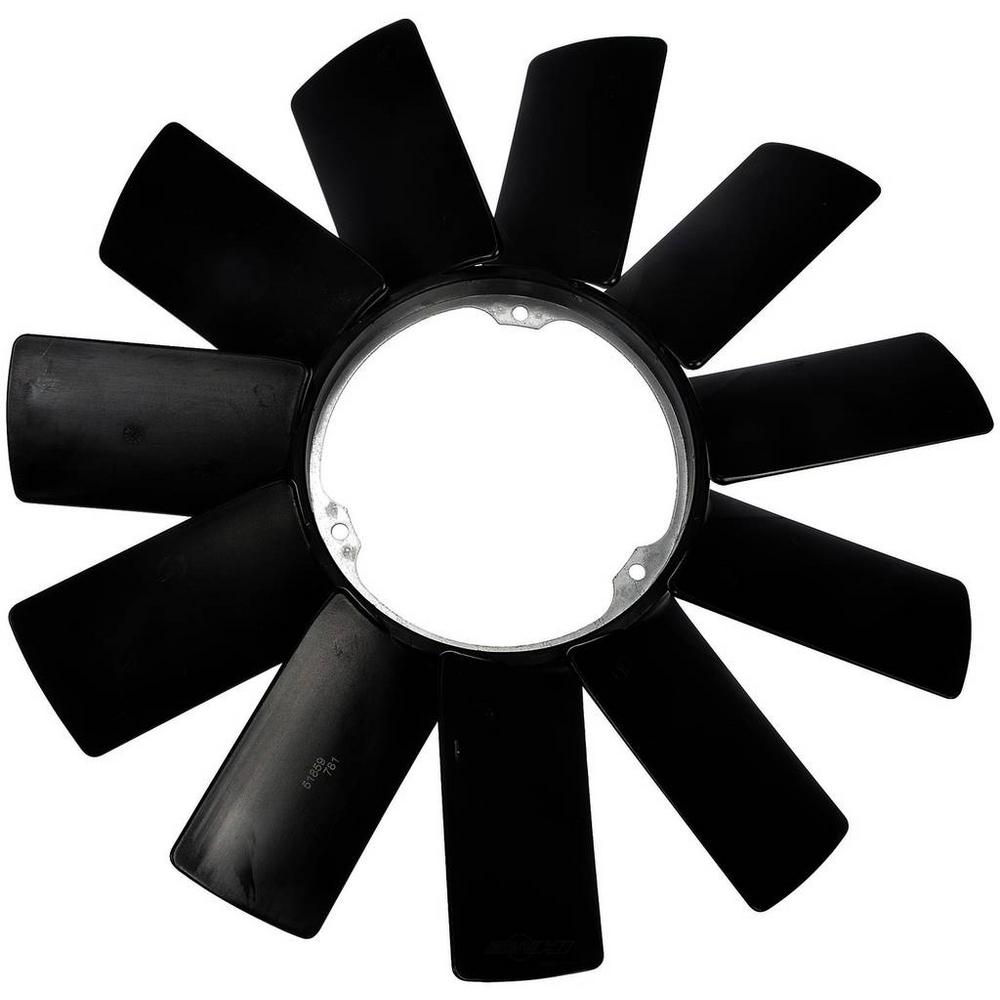The Of Fan Blades
If not, you'll require a brand-new clutch. Do not let the car overheat. Eliminate all or part of the cardboard before the temperature level reviews 210 F. Usage a probe-type thermometer to check the temperature level of the air moving through the radiator. You can examine the fan's speed against the producer's specs by utilizing a photo-tachometer.

It's worth using if the maker offers any specs, even approximate. On some late-model Jeep Grand Cherokees that have both an unique clutch fan and a separate electric fan, the factory specification is simply 300 rpm max with the engine cold. Here, the electrical fan is a major contributor to engine cooling.
At high coolant temperature levels, the fan speed will rise to about 2100 to 2500 rpm with the engine revving at 3000 rpm. Begin by separating the clutch from the fan. On most domestic-brand pickups and SUVs, the fan is held to the clutch by a circle of screws or bolts, and the clutch is threaded onto the water pump sheave by a big nut.
Prior to you unbolt anything, look at the fan sheave and the routing of the drivebelt. If it's a serpentine belt and twists around the pulley from the underside, it's most likely spinning the fan in reverse. Make certain you get a coordinating replacement, frequently marked "Reverse." If you're lucky, there might be sufficient space to unbolt and remove the fan and clutch without taking off the radiator shroud.
3 Easy Facts About Fan Blades Described

This means draining some coolant, disconnecting the upper radiator pipe and in some cases getting rid of the belt. If the clutch is held to the belt sheave hub by screws or bolts, utilize a plumbing professional's strap wrench to keep the sheave from turning while you loosen up the screws. If they're not really tight, you might have the ability to get away with just pressing on the belt.
There are low-cost wrenches created particularly for this job. Inspect with your car parts shop. Reverse the order to install the new clutch. When managing the clutch, lay it flat with the seal facing up to make sure that no silicone leakages out. fan blades. You might be tempted to drop the clutch and install an electric fan package.
But if you're simply fixing the family vehicle, keep in mind that a vehicle maker can incorporate electrical fan controls into the powertrain computer for a more precise result than you could ever get with an aftermarket kit. Buy or lease any unique tools necessary to loosen the clutch from the water pump.
Fan clutches and blades are 2 really essential components when it pertains to keeping precise engine temperature level. With all of the technology built into today's diesel motor, coolant temperature is a key consider how the numerous computers communicate to maintain fuel air ratios for optimum navigate to these guys fuel economy and most affordable possible emissions. Diesel Parts, Inc. has actually been supporting diesel engine powered industries for over forty years. In that time a fantastic quantity of understanding has actually been acquired relating to fan clutches and blades. We offer so much more than just fan clutch repair kits. Diesel Elements, Inc. stocks parts to cover 99% of all heavy responsibility fan clutch repair work requirements.

The 30-Second Trick For Fan Blades
will have you covered for all of your fan clutch and fan blade needs with products from companies such as Bendix, Horton, Kysor/BorgWarner, Eaton, Schwitzer, and Spectrum from Kit Masters, consisting of lots of that are either obsolete or tough to find. fan blades. Couple that with the availability of a wide variety of fan blades from American Cooling, Horton, Multi Wing, and Kysor/Borg Warner, and your fan clutch and blade problems are solved.
If you do not see what you require for diy fan clutch repair by visiting our on line store Click here to go straight to our Contact page, or call 1. 800.252. 6625 local 952. fan blades. 890.2885 you can likewise visit and see us in individual at 1500 East Cliff Roadway, Burnsville, MN 55337, we're open from 8:00 AM to 5:00 PM Monday Through Friday, other than for significant holidays.

In order for a GoldTop fan clutch to operate effectively, there need to be between 90 120 psi of air pressure going see into the fan clutch. This indicates the atmospheric pressure must be tested at the end of the air line, where it links to the fan clutch. The compressor 's pressure gauge does not precisely demonstrate how much air pressure is really entering the fan clutch.
You need a minimum of 90 psi, right at the entry point of your fan clutch, in order for it to operate correctly. If you have more than 90 psi, right at the entry point of your fan clutch, and your fan clutch still won't disengage, the Vehicle Lock feature on your fan clutch has started.